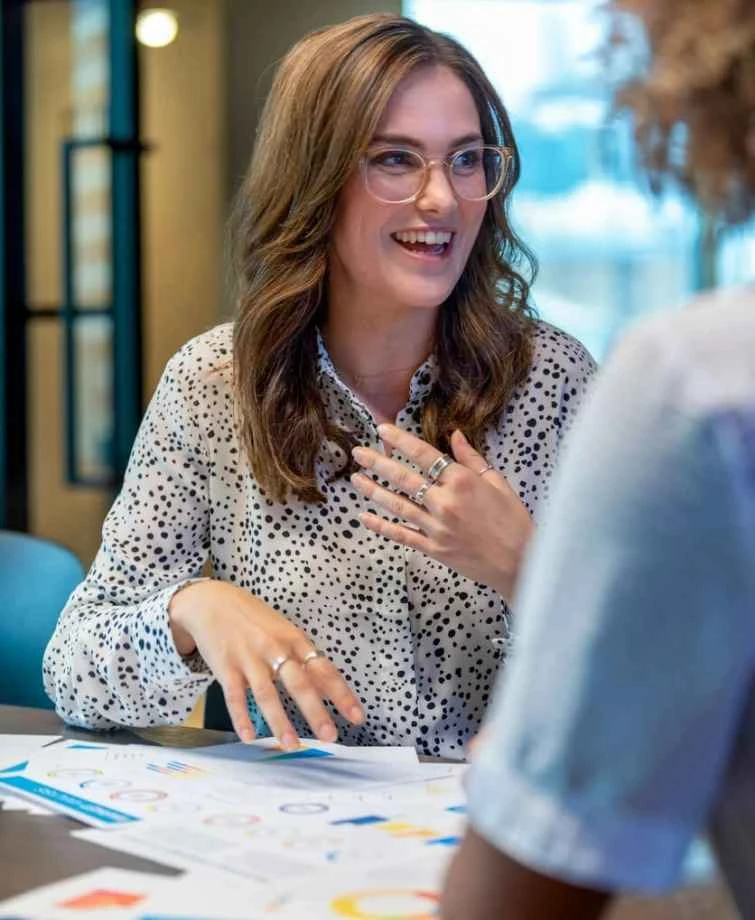Have you ever witnessed a truly great expert presentation in court?
Maybe you worked on the case, or maybe you were on the jury. As a trial graphics consultant, I have seen many expert witness presentations, and the best ones usually go something like this: a well-choreographed yet natural back-and-forth with the questioning attorney, the visual presentation on screen tying it all together, jurors nodding along. A truly winning presentation leads the jury through the expert’s testimony in a cohesive, educational, and even entertaining way. It clearly presents key data as indisputable evidence, while summarily dismissing the opposition’s arguments before they can even be presented.
Now ask yourself, would it matter if that expert presentation bore no resemblance to the case opening presentation, in terms of design or general graphics style? Before you answer (or roll your eyes), consider that—believe it or not—this is an oft-recurring and surprisingly hot-button issue in the world of trial graphics.
Two Schools of Thought
Jurors want one thing from an expert witness: information they can trust. While the attorneys (and to some extent, fact witnesses) may be forgiven for being biased and even argumentative, the best testifying experts are seen by the jury as trustworthy and reliable teachers, essentially neutral. This trust can be difficult to achieve when the other side has an equally pedigreed expert who is going to testify to a contradictory set of facts and conclusions.
As such, some of our clients prefer the expert presentation to have a completely different appearance than the attorney slides—purposefully not matching the opening and closing to avoid any issues of expert witness bias. Many other clients, however, adopt a counter point of view and essentially demand the opposite: make all expert slide decks and graphics conform to the unified case style, recycling images and themes. Simple, clean, done. So, which way is better?
Coordinated Presentations
I love helping experts with courtroom presentations. They know their material so well that there is always a solution to guide their visual storytelling in a way the jury will understand, and they often come armed with their own slides or graphics as a starting point. However, as they are academics and technical experts, additional work is usually needed to translate their concepts into visually digestible information for jurors (who most likely know nothing about the subject at hand).
For some trial teams, “digestibility" includes coordinating the expert presentation with their own visuals, including the PowerPoint template or look and feel specific to the case. Ideally, some of the graphics and concepts that the expert witness uses to support their testimony will have been featured in the opening statement, often as an opportunity to forecast an expert whom “you will hear from in this trial.”
Distinct Designs
For other clients, their desire for the expert witness to appear independent is enough to call for a graphic style that is visually distinct from the rest of the case. This choice often comes down to the personal preference of the decision-makers, who may feel very strongly one way or the other. Many others, however, turn to professionals for direction and guidance. I usually broach the topic with a series of questions:
- Do you want the expert to appear as a separate “entity” from the rest of the trial team? If so, why?
- Are there risks to that approach, with each expert’s opinion appearing to reside within their own private isle of influence?
- Is the jury receiving a subtextual message that the expert and the attorneys are not in sync with one another?
Weighing the Risks and Rewards
Step back and consider the real purpose of all this: to convince decision-makers. As we consider the jury’s experience in watching that hypothetical expert witness presentation in court, are there risks to putting forth a “visually coordinated” presentation in the first place? By matching the styles, have you indicated to the jury that your expert is just another mercenary in the fight, paid to say whatever the lawyer wants the jury to hear?
If jurors think about it at all (and they likely do not), most will probably intuitively understand that the lawyers and the expert are collaborating on the expert’s presentation. I believe jurors benefit from and appreciate the effort that goes into preparing a thoughtful and structured case narrative. Given the relatively short time the expert witness will testify—and the novelty of the content for the jury—simplicity, clarity, and message consistency are essential keys to allowing the expert’s testimony to sink in. We encourage the use of graphics as a means to that end.
An IMS jury consulting colleague once told me that, during post-trial interviews, a juror volunteered some relevant insight about this topic. She and her fellow jurors “loved” the plaintiff’s slides throughout the case—particularly when graphics and themes were repeated from opening, through each expert witness, and finally in closing. Because repetition helps with memory, the cognitive process of digesting recurring themes and visuals was clarifying for this juror. She could not remember the expert’s name, but she remembered the slides.
On the other hand, the continuity of presentation could not fix what this juror identified as the problem with the plaintiff’s case: the expert witnesses were all too invested, too defensive on cross-examination, and sometimes came off as detached. In this case, was the appearance of a “coordinated team” a liability rather than an asset?
See what I mean? Hot-button issue.
Choosing an Approach
At the end of the day, the trial team must decide whether it is better to demonstrate a coordinated effort or for the expert to appear “independent” from the rest of the case. Based on my trial experience, I generally recommend the former unless there is a very compelling reason for the latter. Remember, however, that the jury is deciding on the facts of the case as a whole, not on the likeability of an individual expert or the quality of their presentation. Even great experts with terrific presentations like the one described earlier can end up on the losing side of a case.
IMS’s integrated teams find the best experts for your case, develop compelling presentations, and test your key evidence and strategies with rigorous jury research. Contact us to get started.







